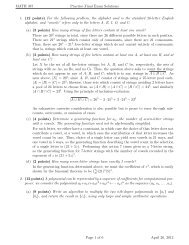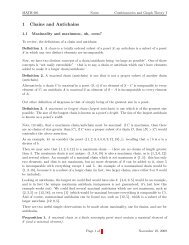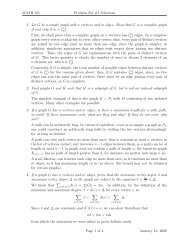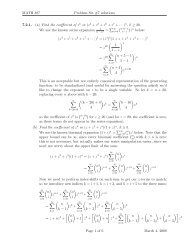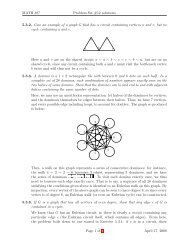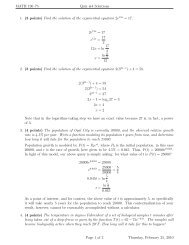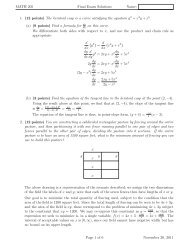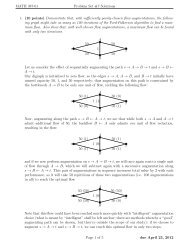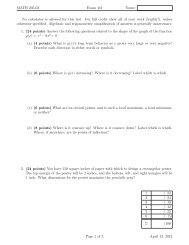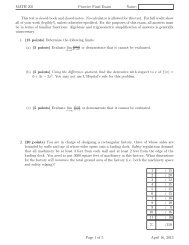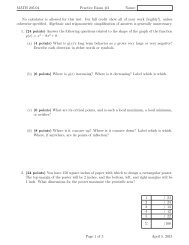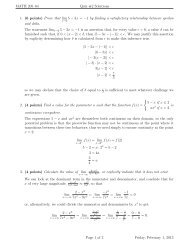Notes for 01/21
Notes for 01/21
Notes for 01/21
Create successful ePaper yourself
Turn your PDF publications into a flip-book with our unique Google optimized e-Paper software.
MATH 682 <strong>Notes</strong> Combinatorics and Graph Theory II<br />
1. Pick a matching M (you can start with the empty matching, or a greedily-constructed matching,<br />
both of which are pretty easy.<br />
2. If every vertex of A is matched by M, we have an A-perfect matching and are done. Otherwise,<br />
let a 0 be the unmatched vertex, and let i be 1.<br />
3. If there is a vertex adjacent to {a 0 , . . . , a i−1 } not already selected as some b k , call it b i .<br />
Otherwise, our graph fails the Hall criterion and has no A-perfect matching.<br />
4. If b i is in our matching, let a i be the vertex matched with it, and increment i and return to<br />
step 3. Otherwise, continue to step 5.<br />
5. Let u 1 = b i , and let j = 1.<br />
6. Let v j be the element of {a 0 , . . . , a i−1 } of lowest index which is adjacent to u j .<br />
7. If v j = a 0 , then continue to the next step. Otherwise, let u j+1 be the vertex matched with<br />
v j in the matching M, increment j, and return to step 6.<br />
8. Remove all edges {v 1 , u 2 }, {v 2 , u 3 }, . . . , {v j−1 , u j } from M, and put the edges {u 1 , v 1 }, {u 2 , v 2 }, . . . , {u j , v j }<br />
in M.<br />
9. Forget what all these variables mean, and return to step 2.<br />
OK, this gets us to a good place as regards matchings in bipartite graphs: we have an algorithm<br />
<strong>for</strong> constructing perfect matchings when they exist (and a moderate tweak of this algorithm can<br />
even find maximal matchings in graphs that don’t meet the Hall criterion). Now we move on to a<br />
harder problem.<br />
1.2 Matchings in non-bipartite graphs<br />
This is a pairing problem <strong>for</strong> not-necessarily-unlike items: one traditional name <strong>for</strong> it is “the roommate<br />
problem”, since unlike <strong>for</strong> job assignments or heterosexual marriage, roommate suitability is<br />
compatability among a single group with no intrinsic bipartition.<br />
Up front, we can work out a few simple facts:<br />
• If G has an odd number of vertices, it has no perfect matching.<br />
• If G has any isolated vertices, it has no perfect matching.<br />
• G has a perfect matching if and only if each of its components has a perfect matching.<br />
The first and second of these observations can actually be united by way of the third to the<br />
observation that if G has any component with an odd number of vertices, then G has no perfect<br />
matching.<br />
In fact, using the same arguments we used to show necessity of the Hall condition on bipartite<br />
graphs, we can find a fairly strong necessary condition <strong>for</strong> a graph to have a perfect matching.<br />
Note that the below condition includes our above observation when S = ∅.<br />
Proposition 3. If there is a set S such that G − S has more than |S| components with an odd<br />
number of vertices, then G has no perfect matching.<br />
Page 6 of 7 January <strong>21</strong>, 2<strong>01</strong>0




